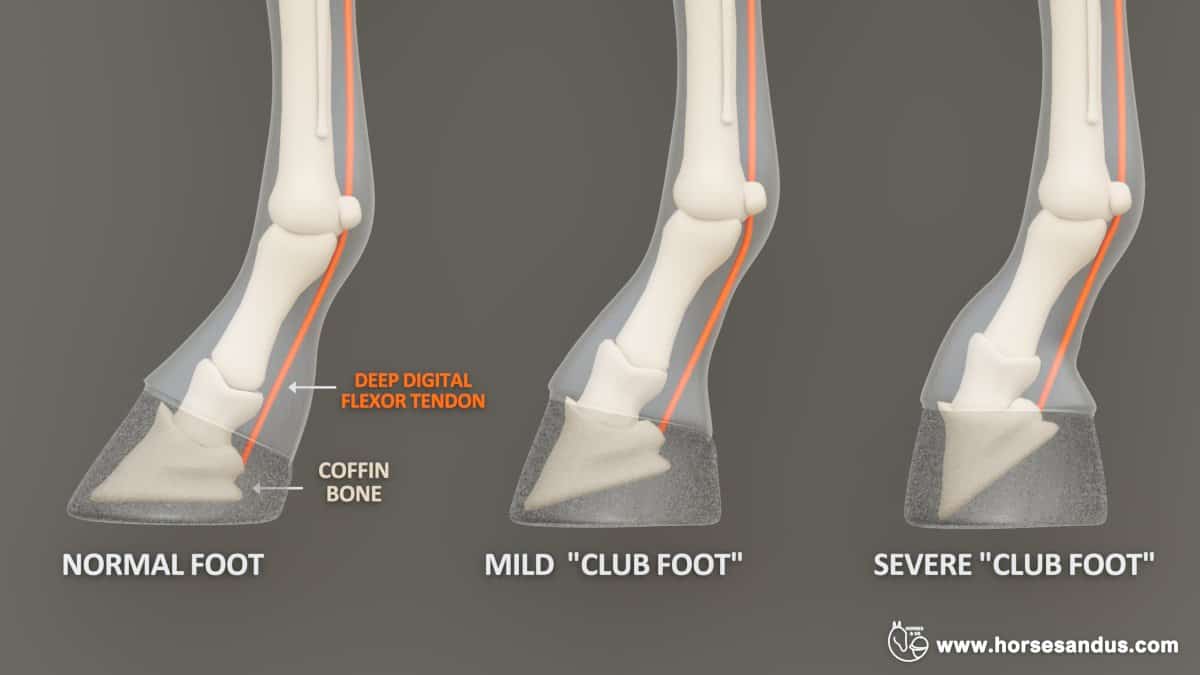
Developmental Orthopedic Disease in Horses [Beginner Guide]
The horse grows sole almost immediately and stays sound." (See "Correcting a Club Foot" on page 68.) Because the foot will grow the same, the horse will always need to be trimmed in this.

Michael Porter, Equine Veterinarian Club foot!!
Club foot in older horses. Club foot in mature horses can lead to decreased athletic ability and lameness as more weight is loaded onto the dorsal hoof wall and sole growth rate decreases. This causes poor performance as the stride length shortens. As the load is transferred through the front of the foot, encouraging toe-first landing, these.
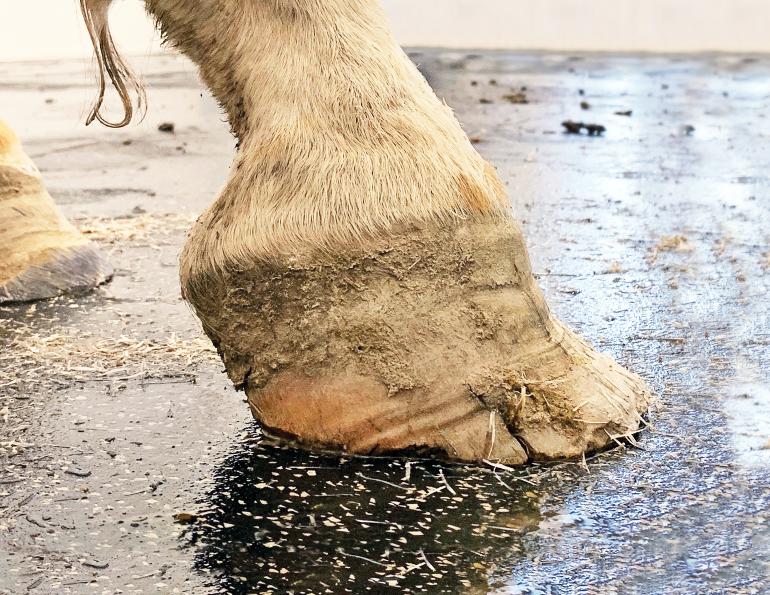
Recognizing and Managing the Club Foot in Horses Horse Journals
Most horsemen define a club foot as hoof and pastern angle of more than 60 degrees, making the foot more upright than normal. The affected hoof is usually stumpy with a short toe and long, upright heel.

Michael Porter, Equine Veterinarian Club foot!!
What Causes Club Foot? There are several causes of club foot. The primary one is genetics. If a horse has a clubbed foot, then the foals that mare or stud produces will have one as well. A diet rich in calories and sugar can cause problems as well. A foal's bones growing too fast for the tendons can cause immense pain.
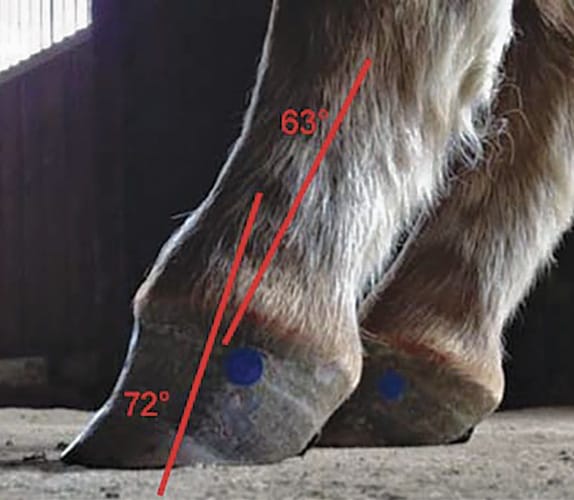
club foot horse cause Merna Tanner
Club foot is a term commonly used to describe an abnormally upright front foot conformation. | Photo: The Horse Staff Q: The farm I work for has a mare with a club foot.
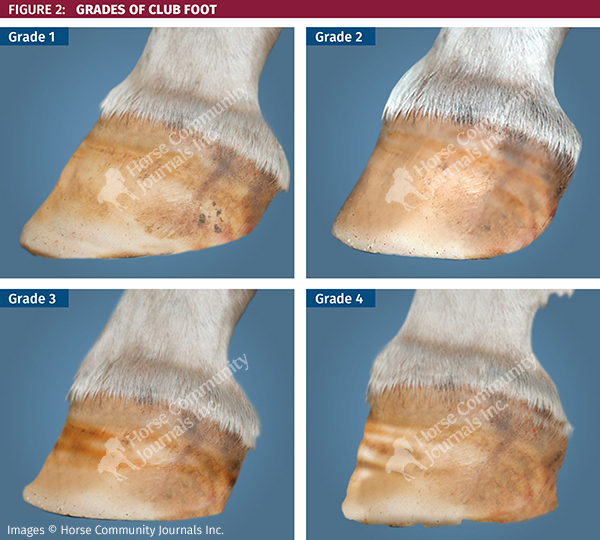
Recognizing and Managing the Club Foot in Horses Horse Journals
Scientifically, a club foot is a flexor contraction of the coffin joint, preventing normal extension. But, what does that actually mean? That statement may not mean much to anyone that doesn't have a significant equine anatomical and biomechanics understanding. So, let's break it down.

The Tolerable Club Foot The Horse Club foot, Healthy horses, Horses
A horse club foot is a condition that can cause significant discomfort and lameness in horses. The hoof of the affected leg appears misshapen and more upright than a normal hoof. Proper management of this condition is crucial to prevent long-term effects on the horse's health and performance.
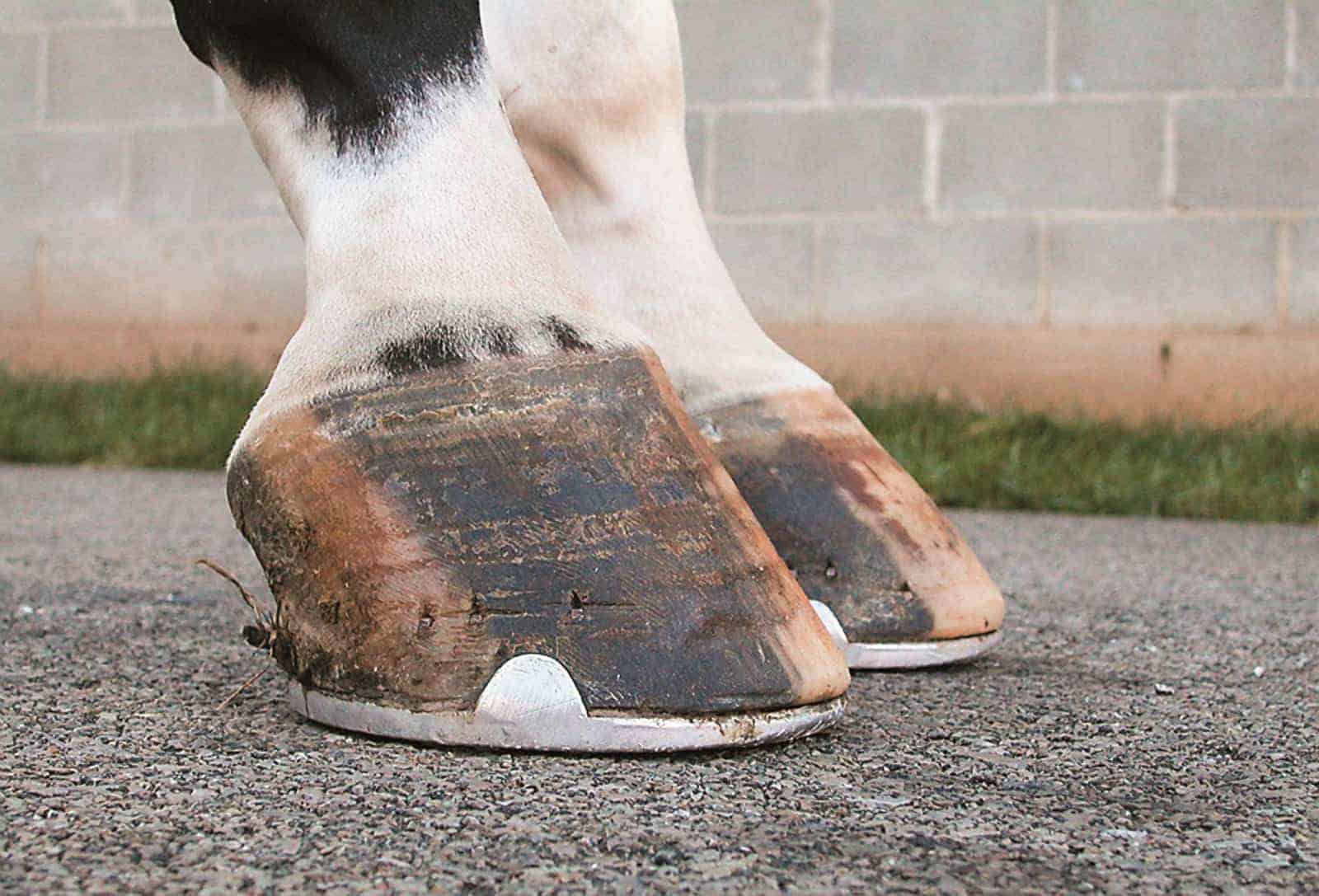
Managing the Club Foot The Horse
Anyone who has spent any time with equines has undoubtedly seen club feet. A club foot horse is typically recognized and defined as having one front hoof growing at a much steeper angle than the other, with a short dished toe, very high heels, extremely curved wall and straight bars.

Foal Deformities Imprint Equine Foot Care
Equine club foot results when the tendons along the back of a horse's limb shorten, causing a constant upward pull where they connect to the coffin bone and heel structure. It causes the heel to lose contact with the ground, and the horse will appear to be walking on tiptoe.
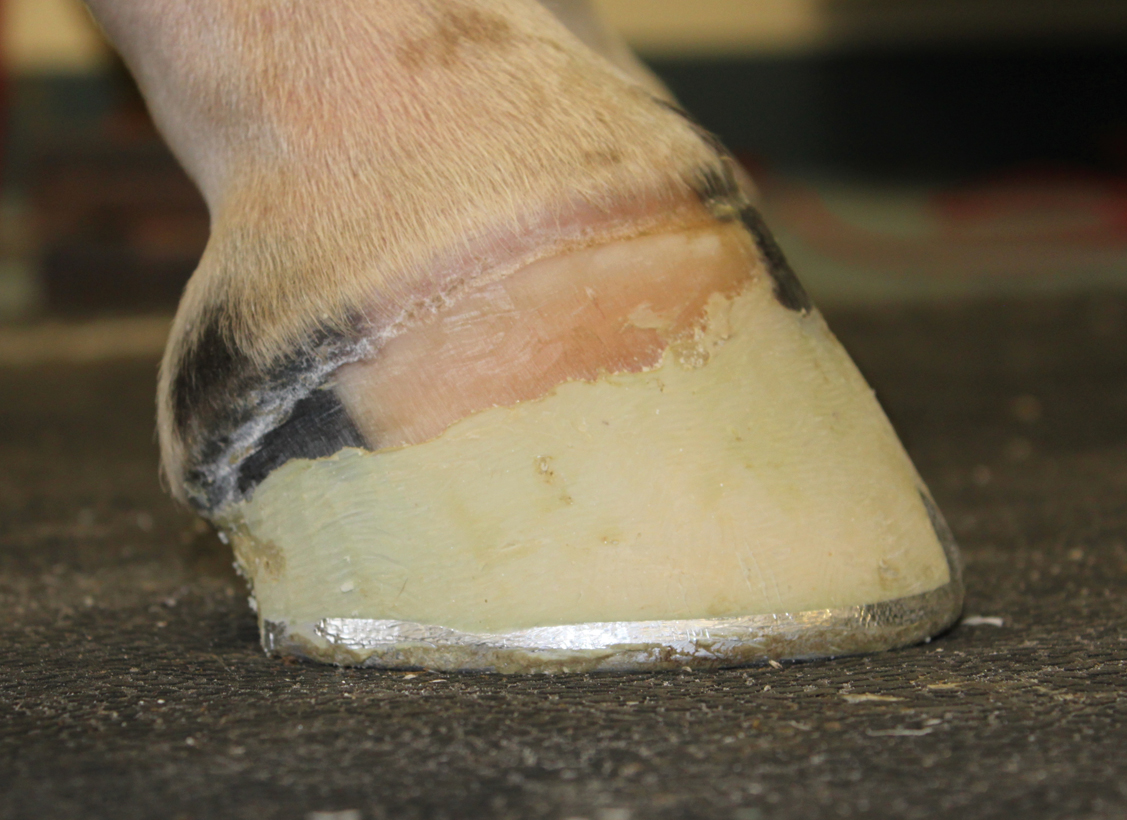
Club Foot in Horses Equine Chronicle
A club foot is an upright foot caused by a shortening of the tendon and muscle of deep digital flexor unit. The excessive pull on the deep digital flexor tendon (DDFT) turns the coffin bone downward, loading shifts to the toe area, and the hoof changes shape in response.
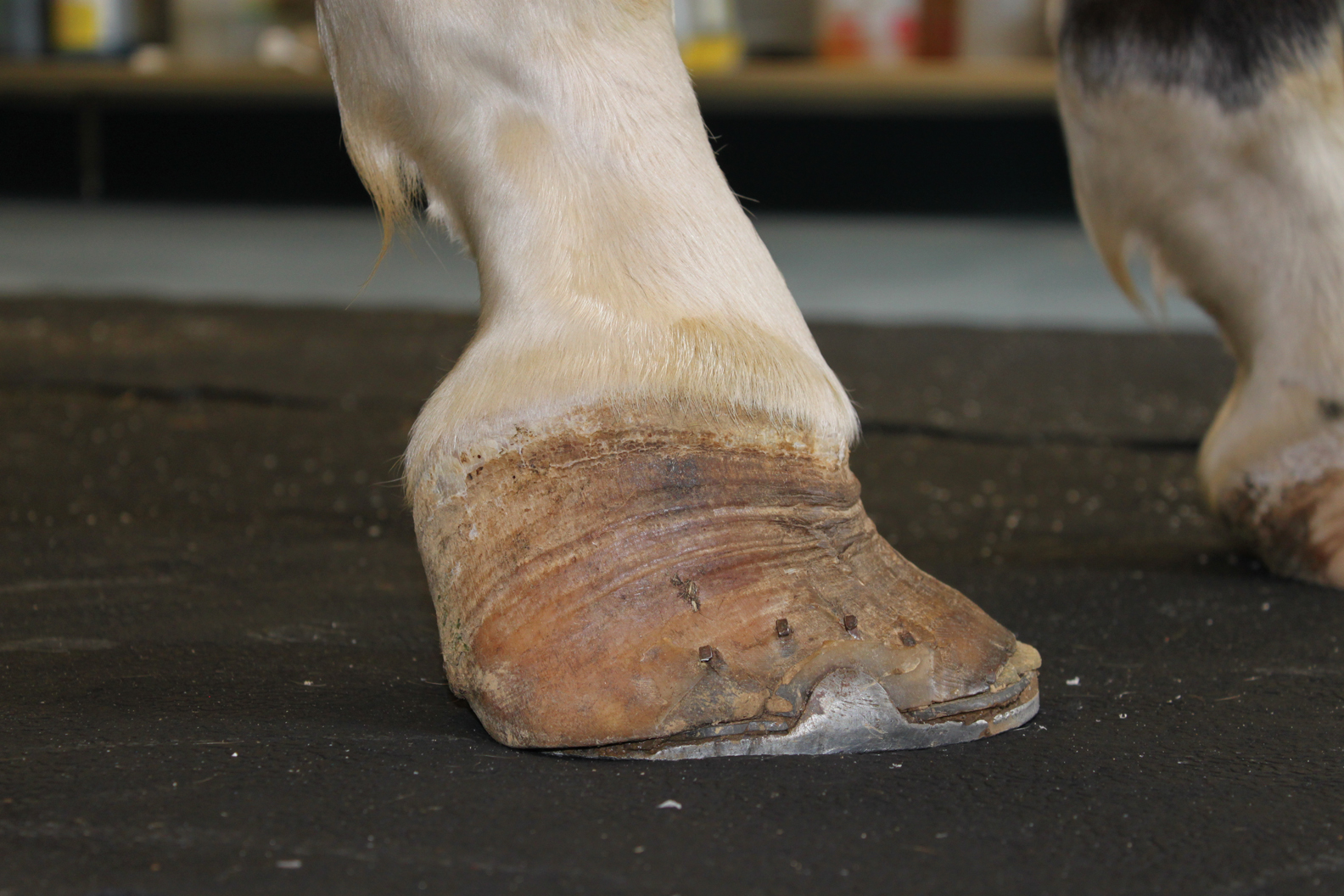
Club Foot in Horses Equine Chronicle
Dr. Randy Eggleston Detecting Club Feet in Foals Many veterinarians believe growth rate—either a disproportionate rate of bone and tendon/ligament growth or pain associated with rapid bone.

Club Foot in Horses Symptoms, Causes, Diagnosis, Treatment, Recovery, Management, Cost
Club foot is one of the most common deformities in the horse world. Horses affected with club foot develop a flexural deformity of the coffin joint, due to a shortening of the musculotendinous unit that starts high up in the limb and inserts on the coffin bone in the foot, resulting in an upright conformation of the foot.

Recognizing and Managing the Club Foot in Horses Horse Journals
The equine club foot is defined as a hoof angle greater than 60 degrees. What we see externally as the equine clubbed foot is actually caused by a flexural deformity of the distal interphalangeal joint (coffin joint). Causes include nutritional issues, heredity, position in the uterus or injury.

Club Foot The Horse's Advocate
Bad club foot on horse. I have a 15 year old thoroughbred who has had a club foot (front left) for the 6 years ive owned her. She was mainly ridden on trails and on the flat in the arena, occasionally around barrels and in the first couple years she jumped. She would occasionally get swelling along the tendon (usually once a year) cold hosing.
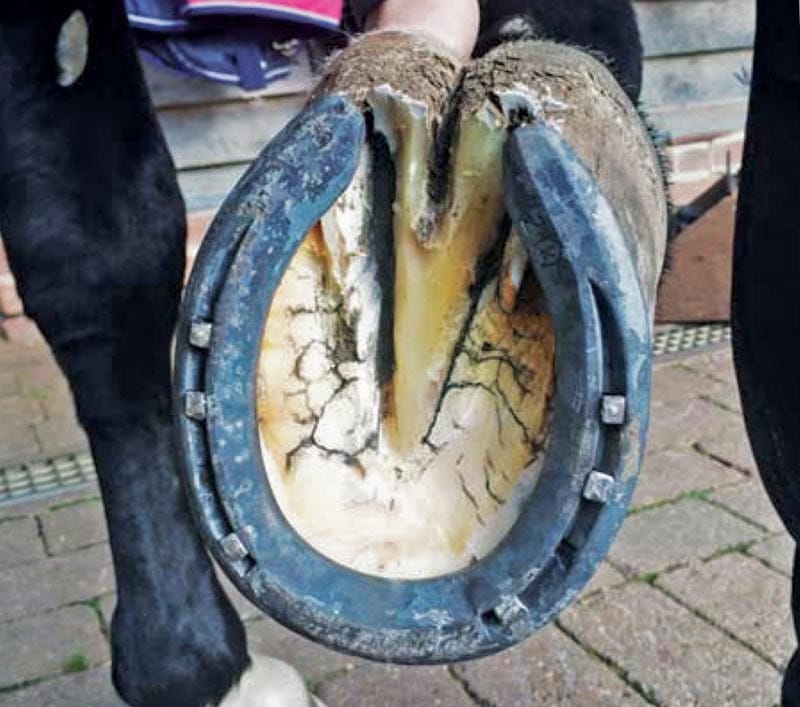
Defining and Fixing a Horse’s Club Foot
Club foot is defined as a flexural deformity of the coffin joint and is a common problem in young, growing horses. Characteristics of a club foot are a prominent or bulging coronary band, a very upright hoof wall angle, a heel that doesn't touch the ground, a dish in the hoof wall at the toe, growth rings wider at the heel than the toe, and other abnormal hoof growth.
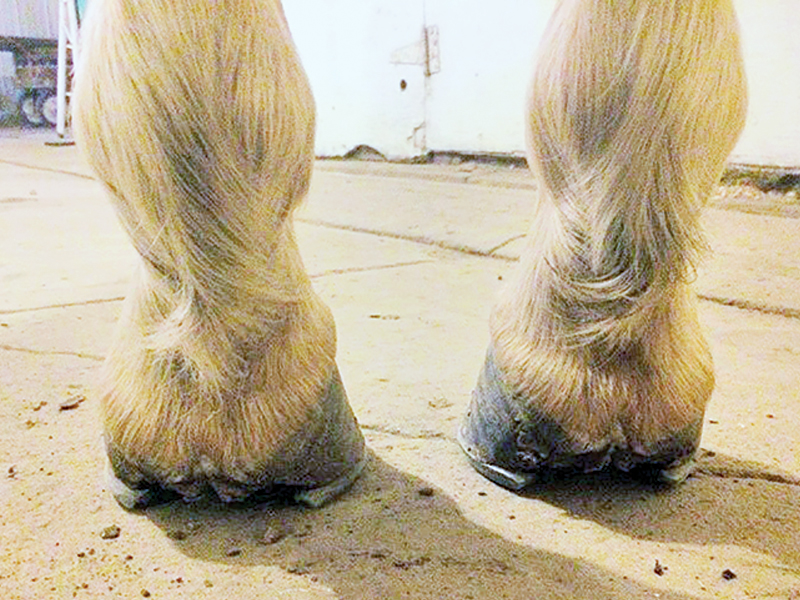
Recognizing and Managing the Club Foot in Horses Horse Journals
Equestrian Canada. Representing, promoting, and developing horse sport and interests in Canada. We share your passion.